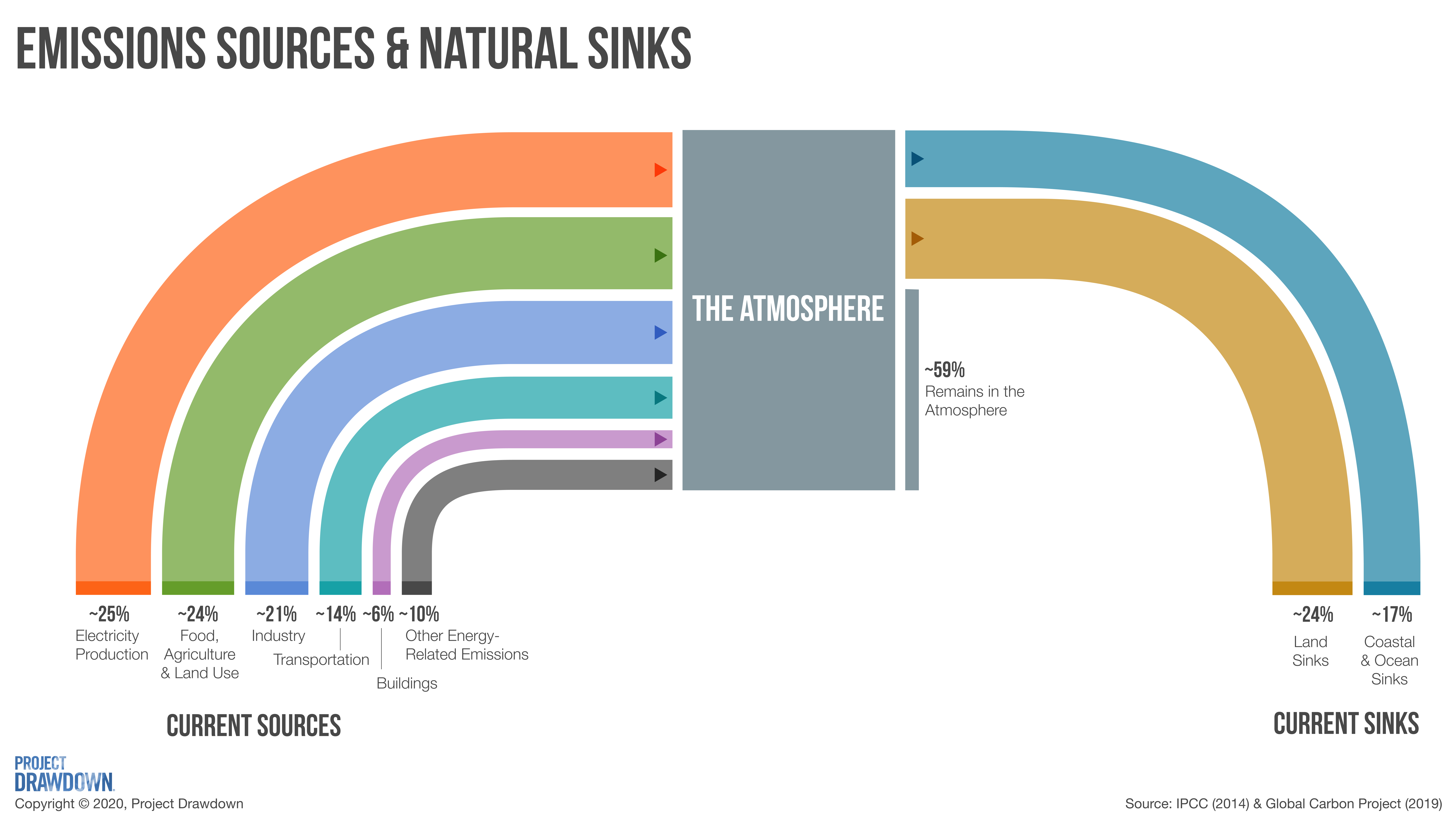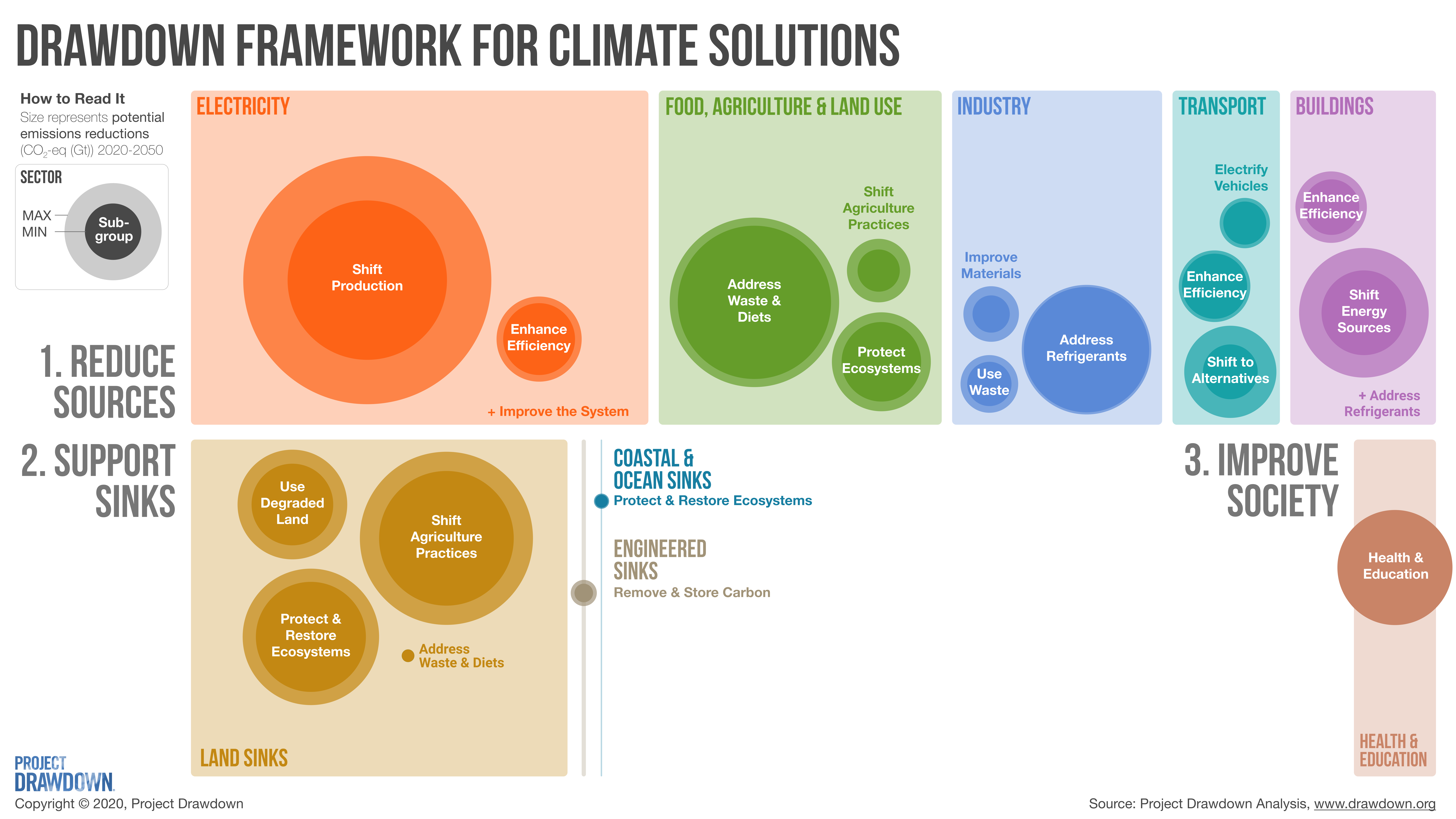The Challenge
To understand and advance climate solutions, it’s important to understand the sources of emissions and nature’s means of rebalancing the climate system.
Burning fossil fuels for electricity, mobility, and heat. Manufacturing cement and steel. Plowing soils. Clearing forests and degrading other ecosystems. All these activities emit heat-trapping carbon dioxide into the air. Cattle, rice fields, landfills, and fossil fuel operations release methane—a gas that warms the planet even more. Nitrous oxide and fluorinated gases seep out of agricultural lands, industrial sites, refrigeration systems, and urban areas, adding still more heat-trapping pollutants to Earth’s atmosphere.
Most of these greenhouse gases stay airborne, but not all. Natural biological and chemical processes—especially photosynthesis—bring some of that excess back to plants, soil, or sea. These “sinks” are nature’s reservoirs for absorbing and storing carbon. While most heat-trapping emissions stay in the atmosphere, significant portions are quickly removed by plants on land or taken up by oceans.



